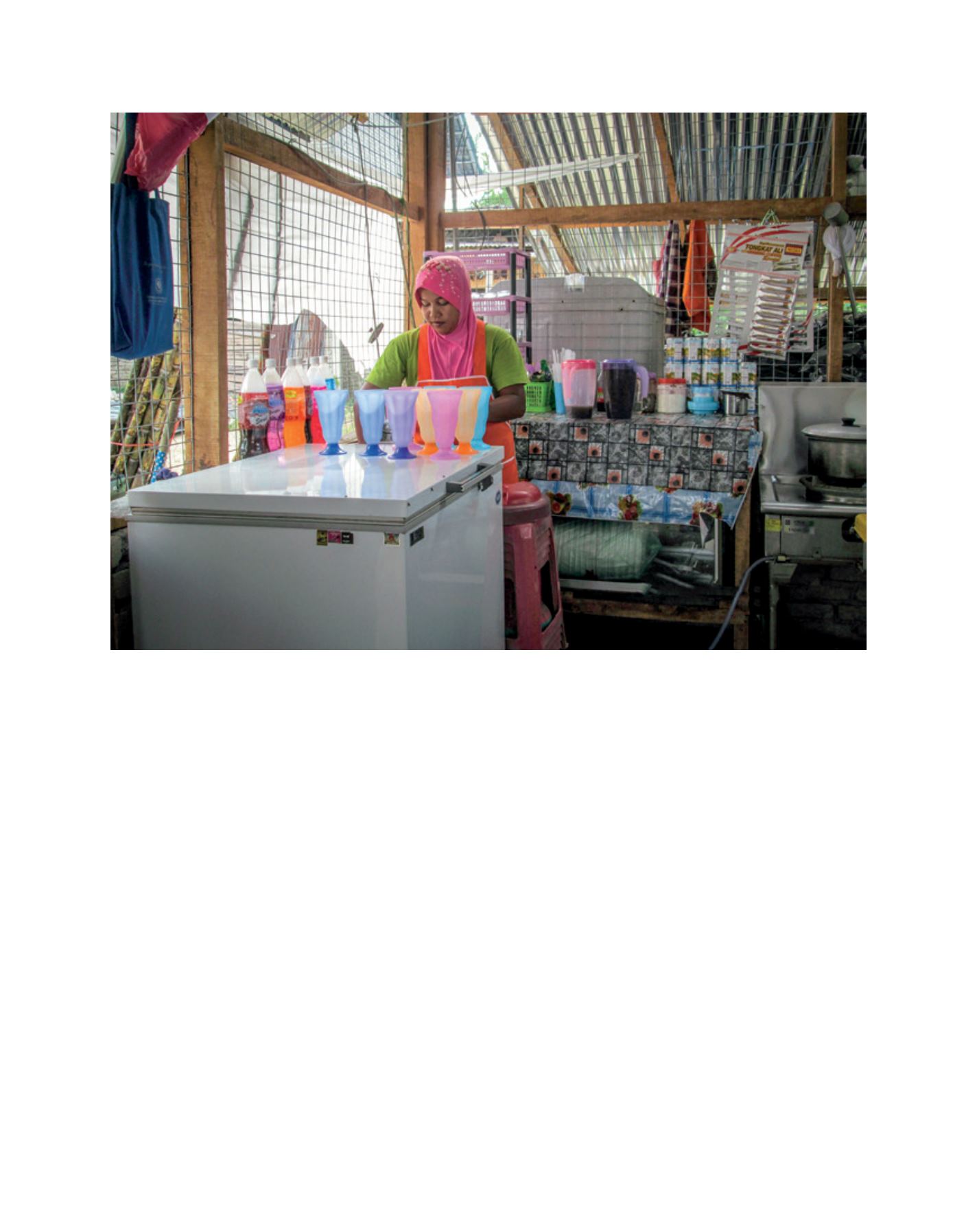

[
] 150
Gajah, Melaka and Jempol, Negeri Sembilan. A total of 200
participants were selected for the project: 100 from the
hardcore poor in Batu Pahat, 50 from the poor category
in Alor Gajah and 50 in the vulnerable to poverty group
in Jempol. The provision for each participant (family) is
different, such that RM10,000 (100 per cent support) is
given to the hardcore poor (Batu Pahat), RM8,000 (80
per cent support) to the poor (Alor Gajah) and RM5,000
(50 per cent support) to the vulnerable to poverty group
(Jempol). Participants were selected from a list given by
the various State Development Offices in October 2009.
Allocations of RM2.05 million were given in November
2009 and the project started in December that year.
In 2010 MARDI was given four new parliamentary constit-
uencies with 335 families involved in the project; 70 per cent
of the participants are hardcore poor and 30 per cent from
the poor category. A budget of about RM6.35 million was
available and each participating family was given RM10,000
assistance to start the project.
In implementing the project various innovations were
carried out, especially in aspects of the selection of project
activities, financial assistance, development of a standard
operating procedure (SOP), technical training and moti-
vation. Continuous project monitoring is an important
element in the implementation which is supported by the
efficient work culture practiced by the staff in the institute.
A working group was formed to implement and monitor the
performance of the project.
To implement the project, participants were given the
choice to determine their own project activities based on
their interests, experiences, abilities and capabilities. This
is very important to determine the success of the project.
The scope of the project activities must be agro-based which
includes field crops, livestock, food processing and services
in the field of food and agriculture. The project activities
proposed by the participants are evaluated and only activi-
ties that can generate revenue quickly, and are viable and
sustainable, are recommended.
In general, the types of projects proposed by the partici-
pants are closely related to the daily activities of the village
communities which involve the production of livestock and
fisheries (chickens, ducks, catfish, tilapia, snakehead and
climbing perch), crop production (vegetables, bananas,
sugar cane, mushrooms), food processing (traditional cakes,
frozen and fried products), small businesses such as kiosks
and stalls selling food and beverages (sugarcane juice, soy
products, cold drinks and fruit slices), and mobile stalls
using three-wheelers selling fish, vegetables, food and drink.
Assistance is also given to activities involving fishing and
cleaning services for farms and paddy fields.
A chest freezer was given to this participant for selling food products
Image: MARDI
D
eep
R
oots
















